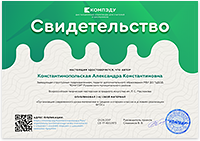DEAR FRIENDS!
In this book you will find description of amusing experiments, which are based upon well-known scientific facts. You can easily carry out these experiments yourselves, and you will not need any special equipment.
The experiments are not only amusing: after you have carried out each experiment and read the explanation, you will learn something interesting and important in such fields of science as math, physics, chemistry, biology, astronomy and psychology.
CATCH THE POSTCARD
Hold a postcard in your left hand, your right hand is ready to catch the postcard, but the fingers are not touching it. If you let the postcard go, you’ll find it easy to catch it with your right hand before it falls down.
Now see if your classmate can catch the postcard when you let it go. Let him hold his fingers on each side of the postcard, as you did before. Let the postcard go. His fingers will not catch it. You can repeat this as often as you want. He will not catch the postcard.
You can catch the postcard because your brain can send “let it go” and “catch” signals to your two hands at the same moment. But when you hold the postcard for your classmate to catch, his brain must first see that the postcard is falling, then send a “catch” signal to his fingers. This takes more time. That is why your friend cannot catch it.

PULSE DETECTOR
Put a thumb - tack into the base of a large match and put it on your hand on the place where you can feel the pulse, when your arm is resting on a table. The head of the match will move a little there and back with each beating of your heart.

MAKE EGGS FLOAT IN SALT WATER
An egg sinks to the bottom if you drop it into a glass of ordinary drinking water but what happens if you add salt? The results are very interesting and can teach you some fun facts about density
What you'll need: one egg, water, salt, tall drinking glass
Instructions:
Pour water into the glass until it is about half full.
Stir in lots of salt (about 6 tablespoons).
Carefully pour in plain water until the glass is nearly full (be careful to not disturb or mix the salty water with the plain water).
Gently lower the egg into the water and watch what happens.
What's happening?
Salt water is denser than ordinary tap water, the denser the liquid the easier it is for an object to float in it. When you lower the egg into the liquid it drops through the normal tap water until it reaches the salty water, at this point the water is dense enough for the egg to float.
If you were careful when you added the tap water to the salt water, they will not have mixed, enabling the egg to amazingly float in the middle of the glass.

MELTING CHOCOLATE
You've no doubt experienced chocolate melting on a hot day, so let's do some experiments to recreate these conditions as well as a few others before comparing results and coming to some conclusions. At what temperature does chocolate go from a solid to a liquid? Is it different for white and dark chocolate? Give this fun science experiment a try and find out!
What you'll need: Small chocolate pieces of the same size (chocolate bar squares or chocolate chips are a good idea), paper plates, pen and paper to record your results
Instructions:
Put one piece of chocolate on a paper plate and put it outside in the shade.
Record how long it took for the chocolate to melt or if it wasn't hot enough to melt then record how soft it was after 10 minutes.
Repeat the process with a piece of chocolate on a plate that you put outside in the sun. Record your results in the same way.
Find more interesting locations to test how long it takes for the chocolate pieces to melt. You could try your school bag, hot water or even your own mouth.
Compare your results, in what conditions did the chocolate melt? You might also like to record the temperatures of the locations you used using a thermometer so you can think about what temperature chocolate melts at.
What's happening?
At a certain temperature your chocolate pieces undergo a physical change, from a solid to a liquid (or somewhere in between). On a hot day, sunlight is usually enough to melt chocolate, something you might have unfortunately already experienced. You can also reverse the process by putting the melted chocolate into a fridge or freezer where it will go from a liquid back to a solid. The chocolate probably melted quite fast if you tried putting a piece in your mouth, what does this tell you about the temperature of your body? For further testing and experiments you could compare white choclate and dark chocolate, do they melt at the same temperature?
How about putting a sheet of aluminium foil between a paper plate and a piece of chocolate in the sun, what happens then?

MIXING OIL AND WATER
Some things just don't get along well with each other. Take oil and water as an example, you can mix them together and shake as hard as you like but they'll never become friends.....or will they? Take this fun experiment a step further and find out how bringing oil and water together can help you do your dishes.
What you'll need: small soft drink bottle, water, food colouring, 2 tablespoons of cooking oil, dish washing liquid or detergent
Instructions:
Add a few drops of food colouring to the water.
Pour about 2 tablespoons of the coloured water along with the 2 tablespoons of cooking oil into the small soft drink bottle.
Screw the lid on tight and shake the bottle as hard as you can.
Put the bottle back down and have a look, it may have seemed as though the liquids were mixing together but the oil will float back to the top.
What's happening?
While water often mixes with other liquids to form solutions, oil and water does not. Water molecules are strongly attracted to each other, this is the same for oil, because they are more attracted to their own molecules they just don't mix together. They separate and the oil floats above the water because it has a lower density.
If you really think oil and water belong together then try adding some dish washing liquid or detergent. Detergent is attracted to both water and oil helping them all join together and form something called an emulsion. This is extra handy when washing those greasy dishes, the detergent takes the oil and grime off the plates and into the water, yay!


BAKING SODA & VINEGAR VOLCANO
Use baking soda and vinegar to create an awesome chemical reaction! Watch as it rapidly fizzes over the container and make sure you've got some towels ready to clean up.
What you'll need: Baking Soda (make sure it's not baking powder), vinegar, a container to hold everything and avoid a big mess; paper towels or a cloth (just in case)
What's happening?
The baking soda (sodium bicarbonate) is a base while the vinegar (acetic acid) is an acid. When they react together they form carbonic acid which is very unstable, it instantly breaks apart into water and carbon dioxide, which creates all the fizzing as it escapes the solution.For extra effect you can make a realistic looking volcano. It takes some craft skills but it will make your vinegar and baking soda eruptions will look even more impressive!

DISSOLVING SUGAR AT DIFFERENT HEATS
Learn about solutions as you add more and more sugar cubes to different temperature water. This easy experiment shows that you can only dissolve a certain amount and that this changes as the water gets hotter.
What you'll need: sugar cubes, cold water in a clear glass, hot water in a clear glass (be careful with the hot water), spoon for stirring
Instructions:
Make sure the glasses have an equal amount of water.
Put a sugar cube into the cold water and stir with the spoon until the sugar disappears. Repeat this process (remembering to count the amount of sugar cubes you put into the water) until the sugar stops dissolving, you are at this point when sugar starts to gather on the bottom of the glass rather than dissolving.
Write down how many sugar cubes you could dissolve in the cold water.
Repeat the same process for the hot water, compare the number of sugar cubes dissolved in each liquid, which dissolved more?
What's happening?
The cold water isn't able to dissolve as much sugar as the hot water, but why? Another name for the liquids inside the cups is a 'solution', when this solution can no longer dissolve sugar it becomes a 'saturated solution', this means that sugar starts forming on the bottom of the cup.
The reason the hot water dissolves more is because it has faster moving molecules which are spread further apart than the molecules in the cold water. With bigger gaps between the molecules in the hot water, more sugar molecules can fit in between.

MAKING MUSIC WITH WATER
Have you ever tried making music with glasses or bottles filled with water? I bet you favourite band hasn't. Experiment with your own special sounds by turning glasses of water into instruments, make some cool music and find out how it works.
What you'll need: 5 or more drinking glasses or glass bottles, water, wooden stick such as a pencil
Instructions:
Line the glasses up next to each other and fill them with different amounts of water. The first should have just a little water while the last should almost full, the ones in between should have slightly more than the last.
Hit the glass with the least amount of water and observe the sound, then hit the glass with the most water, which makes the higher sound?
Hit the other glasses and see what noise they make, see if you can get a tune going by hitting the glasses in a certain order.
What's happening?
Each of the glasses will have a different tone when hit with the pencil, the glass with the most water will have the lowest tone while the glass with the least water will have the highest. Small vibrations are made when you hit the glass, this creates sound waves which travel through the water.
More water means slower vibrations and a deeper tone.


USE A BALLOON TO AMPLIFY SOUND
Small sounds can still make a big noise when you use a good sound conductor. Experiment with a balloon, compressed air and your own ears to find out how it works and the science behind it.
What you'll need: Balloon
Instructions:
Blow up the balloon.
Hold the balloon close to your ear while you tap lightly on the other side.
What's happening?
Despite you only tapping lightly on the balloon your ears can hear the noise loudly. When you blew up the balloon you forced the air molecules inside the balloon closer to each other.
Because the air molecules inside the balloon are closer together, they become a better conductor of sound waves than the ordinary air around you.

BUCKET SPINNING
You might think that an upside down bucket of water above your head would end up with you getting very wet but what if the bucket is spinning quickly in a circular motion? Give this fun science experiment for kids a try and see what happens while learning a thing or two about centripetal force.
What you'll need:A reliable bucket with a strong handle, water, an open area outside where spilling some water is ok.
Instructions:
Fill the bucket until it is around half full with water.
Stand well clear of other people or anything else that could get in the way.
Hold the bucket by its handle with your arm extended and start spinning it by your side towards the sky and back to the ground in a circular motion, make sure to spin it fast enough to keep the water inside the bucket. Be prepared to get a little wet as your technique improves.
Stop spinning before your arm gets tired, watching out for splashes as you carefully bring the bucket back to rest on the ground.
What's happening?
There's half a bucket of water spinning upside down above your head and yet it's not falling out and getting you wet, what's going on?
This experiment makes use of something called 'centripetal force', which is a force acting on an object moving in a circular path, directed towards the center around which it is moving. This type of force can also be seen on roller coasters or by satellites in orbit around a planet.
As you spin the bucket you might feel that it wants to fly off in a straight line away from you (you might even accidentally let go of it), this is a demonstration of Newton's first law of motion, that an object will continue in a straight line unless an outside force (in this case your arm) acts upon it.

INVISIBLE INK WITH LEMON JUICE
Making invisible ink is a lot of fun, you can pretend you are a secret agent as you keep all your secret codes and messages hidden from others. All you need is some basic household objects and the hidden power of lemon juice.
What you'll need: Half a lemon, water, spoon, bowl, cotton bud, white paper, lamp or other light bulb
Instructions:
Squeeze some lemon juice into the bowl and add a few drops of water.
Mix the water and lemon juice with the spoon.
Dip the cotton bud into the mixture and write a message onto the white paper.
Wait for the juice to dry so it becomes completely invisible.
When you are ready to read your secret message or show it to someone else, heat the paper by holding it close to a light bulb.
What's happening?
Lemon juice is an organic substance that oxidizes and turns brown when heated. Diluting the lemon juice in water makes it very hard to notice when you apply it the paper, no one will be aware of its presence until it is heated and the secret message is revealed. Other substances which work in the same way include orange juice, honey, milk, onion juice, vinegar and wine. Invisible ink can also be made using chemical reactions or by viewing certain liquids under ultraviolet (UV) light.

TEST YOUR DOMINANT SIDE
Check out this cool experiment that will teach you more about how your body and brain work together. Test your dominant side by completing a series of challenges. Which hand do you write with? Which foot do you kick with? Do you have a dominant eye? Do you throw with one side of your body but kick with the other? Are you ambidextrous? Answer these questions and much more with this fun science experiment for kids.
What you'll need: A pen or pencil, paper or a notepad to write your findings on, an empty tube (an old paper towel tube is good), a cup of water, a small ball (or something soft you can throw) Instructions:
Write ‘left’ or ‘right’ next to each task depending on what side you used/favored.
When you’ve finished all the challenges review your results and make your own conclusions about which is your dominant eye, hand and foot.
Eye tests:
Which eye do you use to wink?
Which eye do you use to look through the empty tube?
Extend your arms in front of your body. Make a triangle shape using your fore fingers and thumbs. Bring your hands together, making the triangle smaller (about the size of a coin is good). Find a small object in the room and focus on it through the hole in your hands (using both eyes). Try closing just your left eye and then just your right, if your view of the object changed when you closed your left eye mark down ‘left’, if it changed when you closed your right eye mark down ‘right’.
Hand/Arm tests:
Which hand do you use to write?
Pick up the cup of water, which hand did you use?
Throw the ball, which arm did you use?
Foot/Leg tests:
Run forward and jump off one leg, which did you jump off?
Drop the ball on the ground and kick it, which foot did you use?
What's happening?
So what side do you favor? Are you left handed or right handed? Left footed or right footed? Is your right eye dominant or is it your left?
Around 90% of the world’s population is right handed. Why most people favor the right side is not completely understood by scientists. Some think that the reason is related to which side of your brain you use for language. The right side of your body is controlled by the left side of your brain, and in around 90% of people the left side of the brain also controls language.
Others think the reason might have more to do with culture. The word ‘right’ is associated being correct and doing the right thing while the word ‘left’ originally meant ‘weak’. Favoring the right hand may have become a social development as more children were taught important skills by right handed people and various tools were designed to be used with the right hand.
Around 80% of people are right footed and 70% favor their right eye. These percentages are lower than those who are right handed and this could be because your body has more freedom of choice in choosing its favored foot and eye than that of its favored hand. In other words you are more likely to be trained to use your right hand than your right foot and even more so than your right eye.
It’s not strange to find people who favor the opposite hand and foot (e.g. left hand and right foot), and some people are lucky enough to be ambidextrous, meaning they can use their left and right sides with equal skill.
Try testing others and coming to your on conclusions about what side the human body favors and why.
Extra: Are you more likely to be left handed if one of your parents is left handed? What are some of the possible disadvantages for left handed people? (Tools, writing materials etc) Do left handed people have an advantage in sports?
Interesting fact: In 2009, only 7% of the players in the NBA were left handed while in 2008 around 26% of MLB pitchers were left handed.
Is it better to be left handed in some sports than others? What do you think?

TASTE TESTING WITHOUT SMELL
We all know that some foods taste better than others but what gives us the ability to experience all these unique flavours? This simple experiment shows that there's a lot more to taste than you might have first thought.
What you'll need: A small piece of peeled potato, a small piece of peeled apple (same shape as the potato so you can't tell the difference)
Instructions:
Close your eyes and mix up the piece of potato and the piece of apple so you don't know which is which.
Hold your nose and eat each piece, can you tell the difference?
What's happening?
Holding your nose while tasting the potato and apple makes it hard to tell the difference between the two. Your nose and mouth are connected through the same airway which means that you taste and smell foods at the same time. Your sense of taste can recognize salty, sweet, bitter and sour but when you combine this with your sense of smell you can recognize many other individual 'tastes'. Take away your smell (and sight) and you limit your brains ability to tell the difference between certain foods.

Water Molecules on the Move
This experiment is great for testing if hot water molecules really move faster than cold ones. Pour some water, drop in some food coloring and compare results.
What you'll need:
A clear glass filled with hot water
A clear glass filled with cold water
Food coloring
An eye dropper
Instructions:
Fill the glasses with the same amount of water, one cold and one hot.
Put one drop of food coloring into both glasses as quickly as possible.
Watch what happens to the food colouring.
What's happening?
If you watch closely you will notice that the food coloring spreads faster throughout the hot water than in the cold. The molecules in the hot water move at a faster rate, spreading the food coloring faster than the cold water molecules which mover slower.

Static Electricity Experiment
They say opposites attract and that couldn't be truer with these fun static electricity experiments. Find out about positively and negatively charged particles using a few basic items, can you control if they will be attracted or unattracted to each other?
What you'll need:
2 inflated balloons with string attached
Your hair
Aluminium can
Woolen fabric
Instructions:
Rub the 2 balloons one by one against the woolen fabric, then try moving the balloons together, do they want to or are they unattracted to each other?
Rub 1 of the balloons back and forth on your hair then slowly it pull it away, ask someone nearby what they can see or if there's nobody else around try looking in a mirror.
Put the aluminium can on its side on a table, after rubbing the balloon on your hair again hold the balloon close to the can and watch as it rolls towards it, slowly move the balloon away from the can and it will follow.
What's happening?
Rubbing the balloons against the woolen fabric or your hair creates static electricity. This involves negatively charged particles (electrons) jumping to positively charged objects. When you rub the balloons against your hair or the fabric they become negatively charged, they have taken some of the electrons from the hair/fabric and left them positively charged.
They say opposites attract and that is certainly the case in these experiments, your positively charged hair is attracted to the negatively charged balloon and starts to rise up to meet it. This is similar to the aluminium can which is drawn to the negatively charged balloon as the area near it becomes positively charged, once again opposites attract.
In the first experiment both the balloons were negatively charged after rubbing them against the woolen fabric, because of this they were unattracted to each other.






